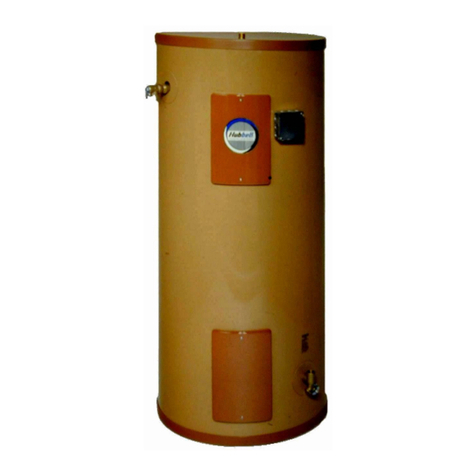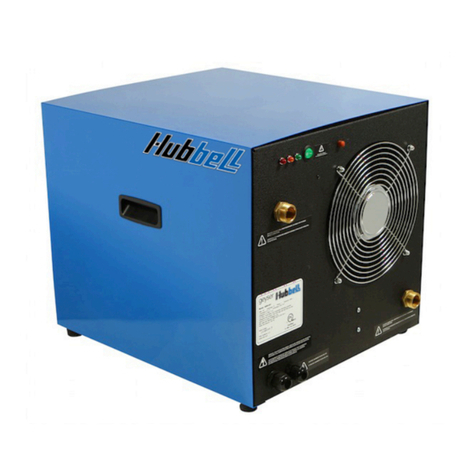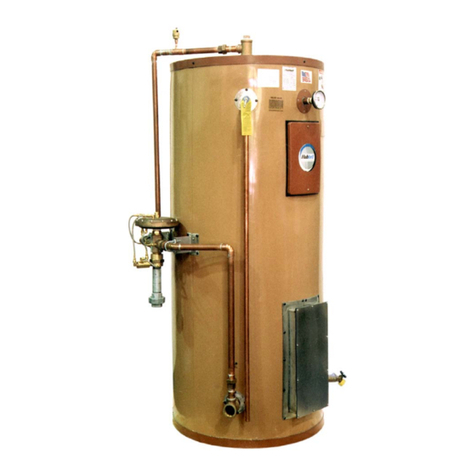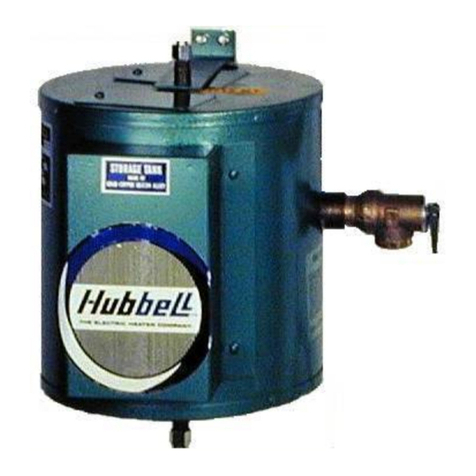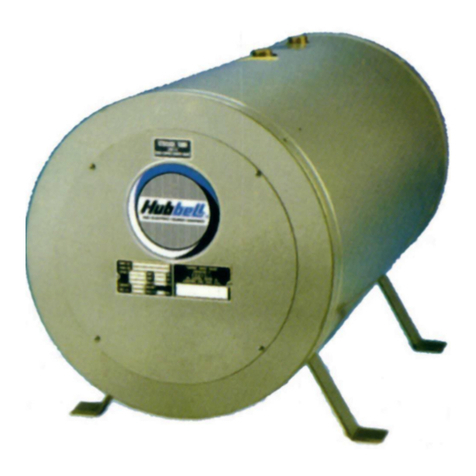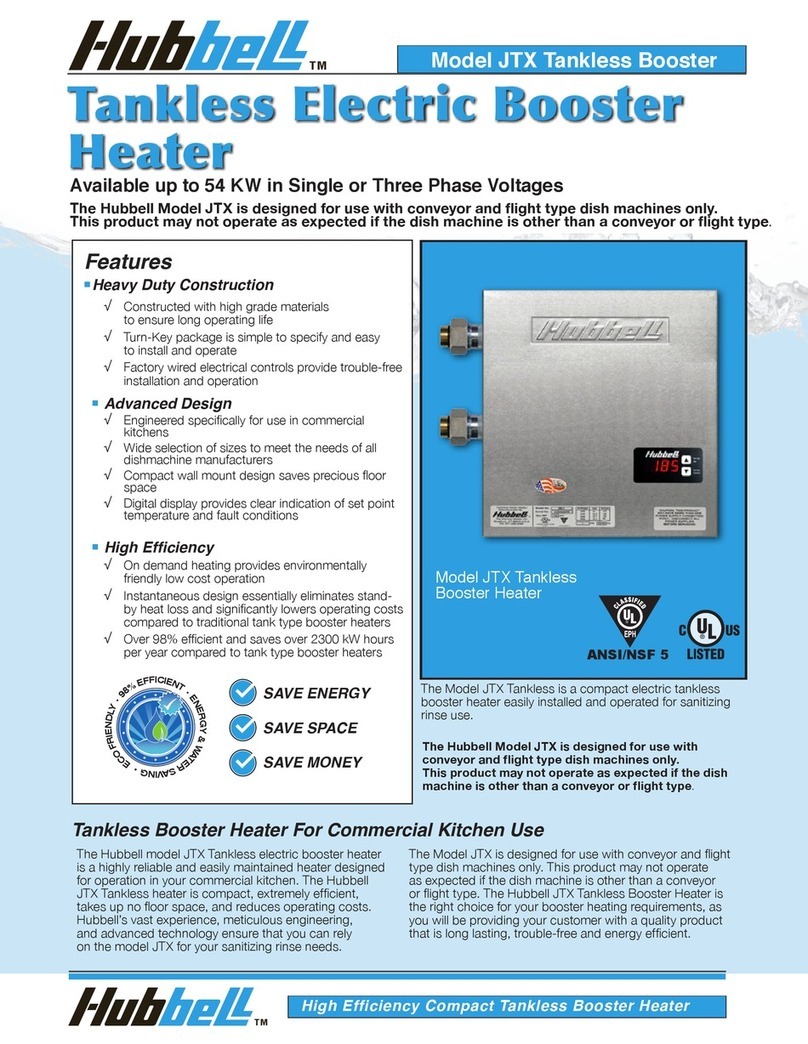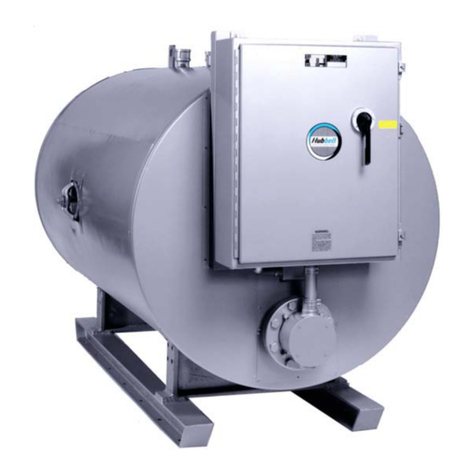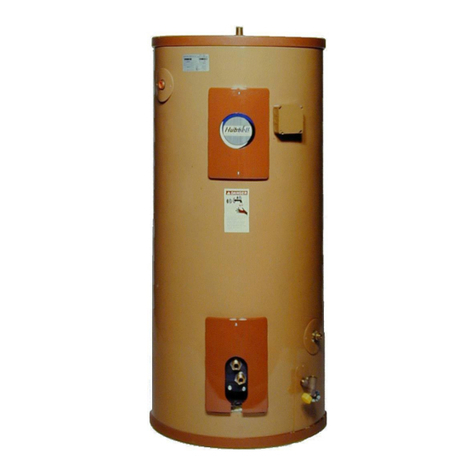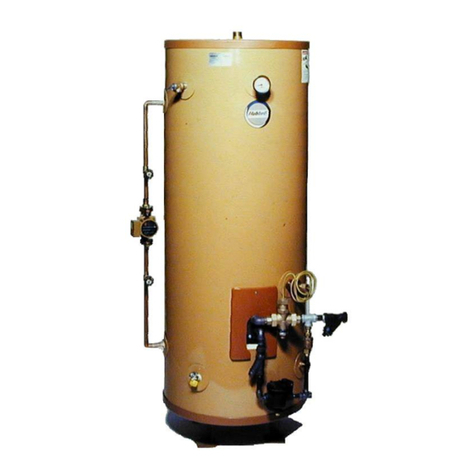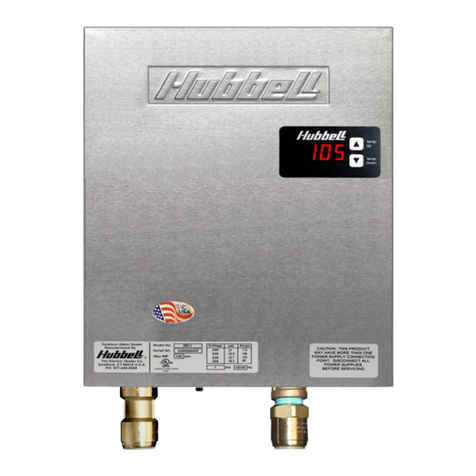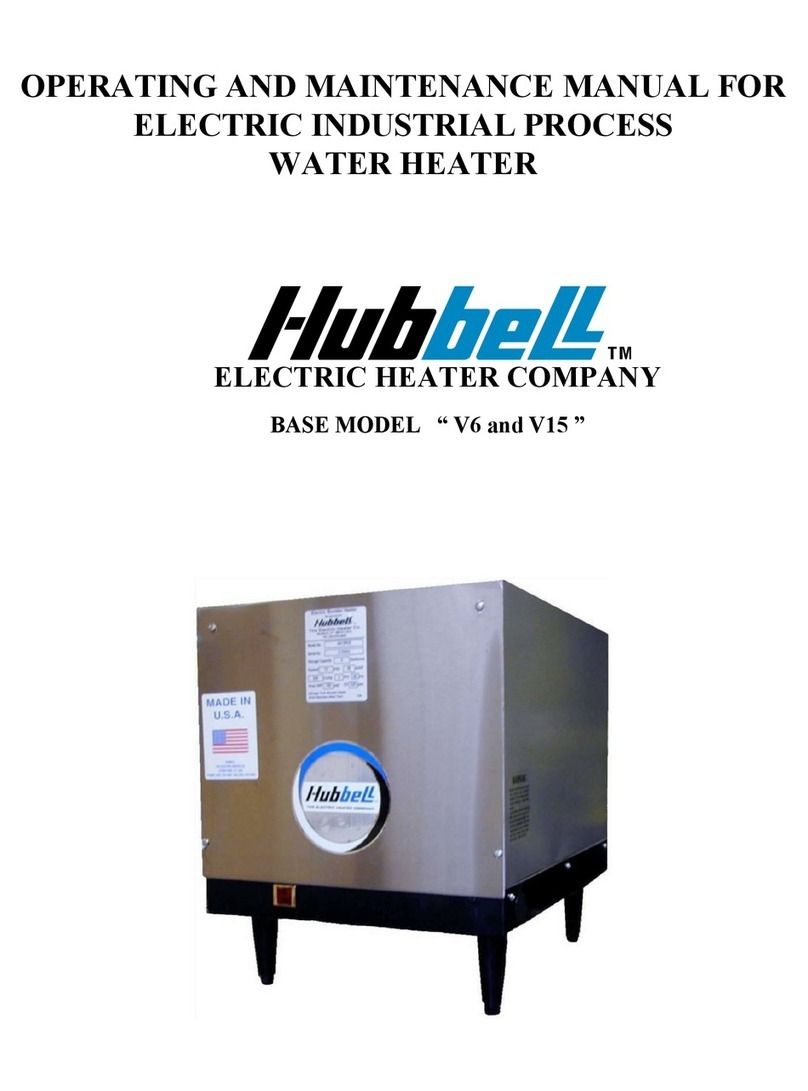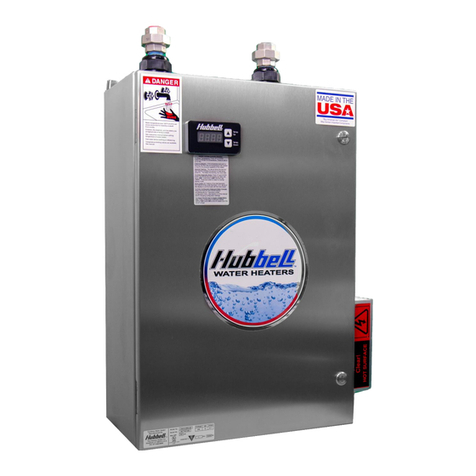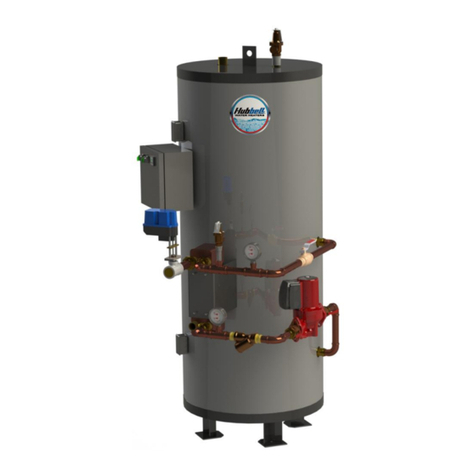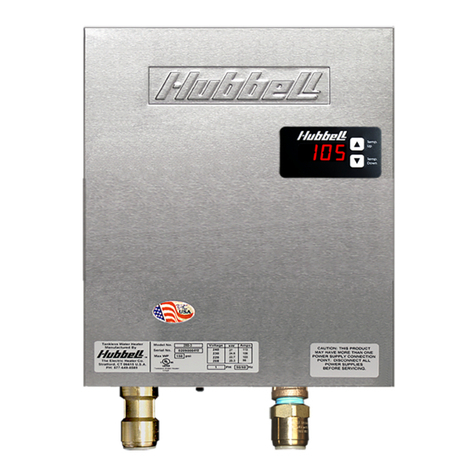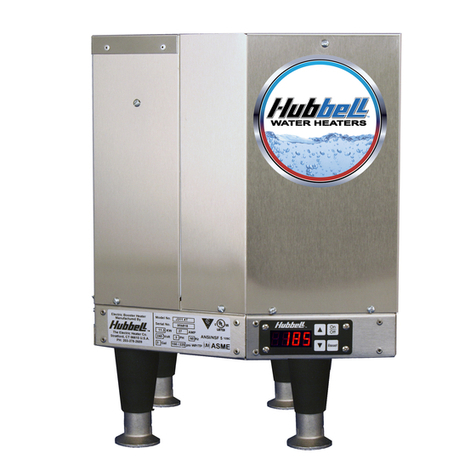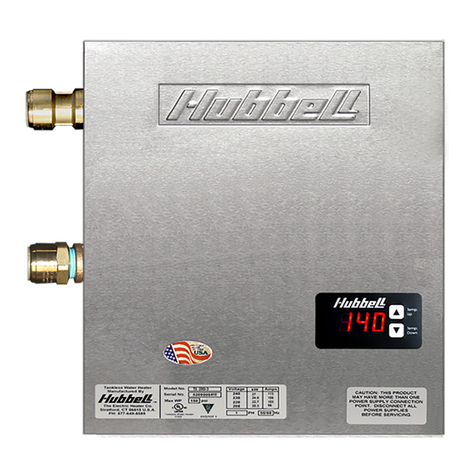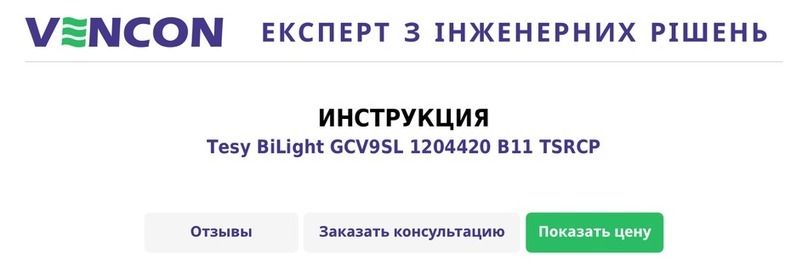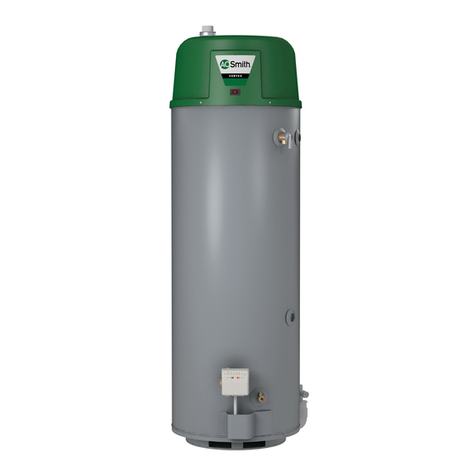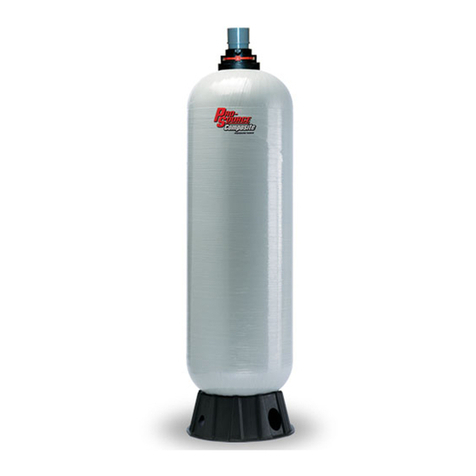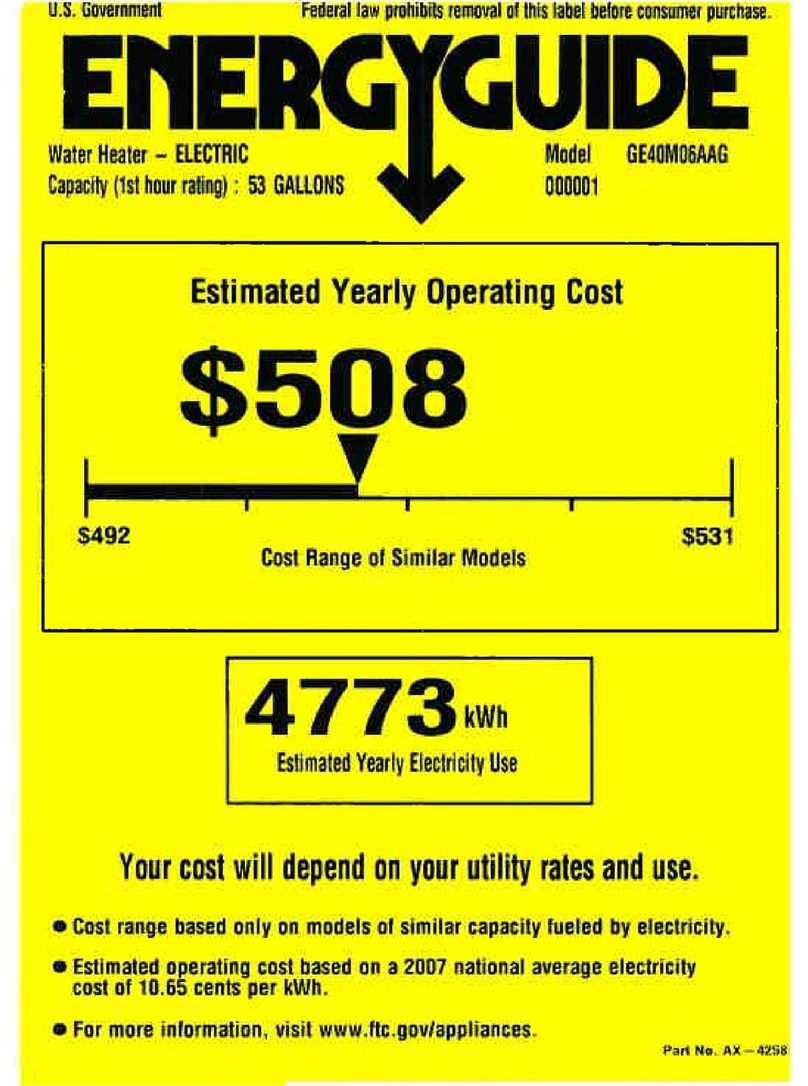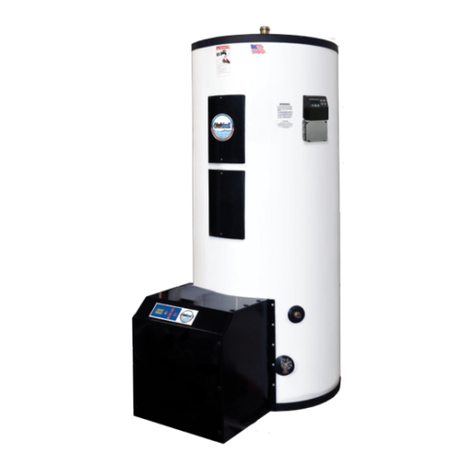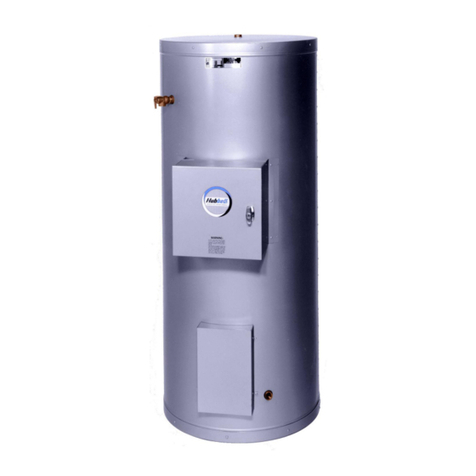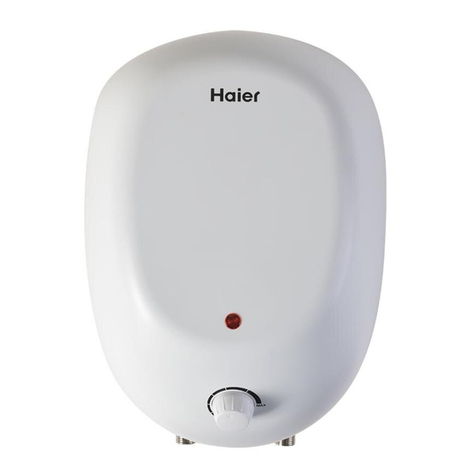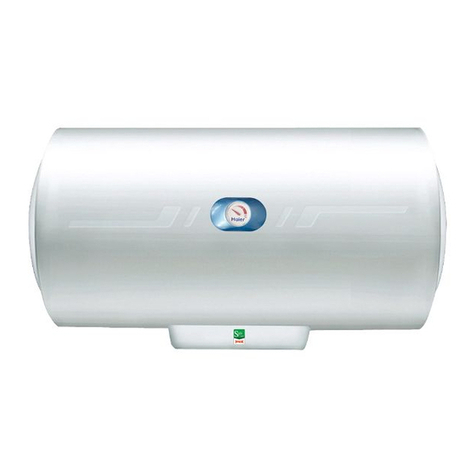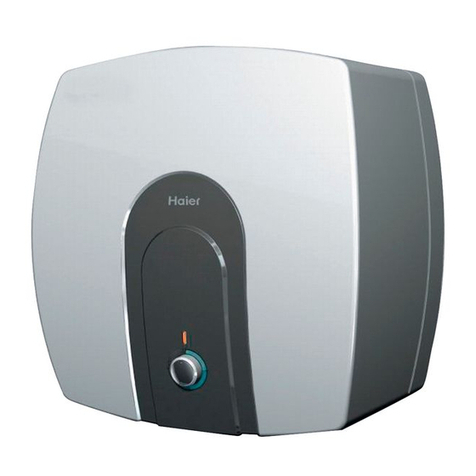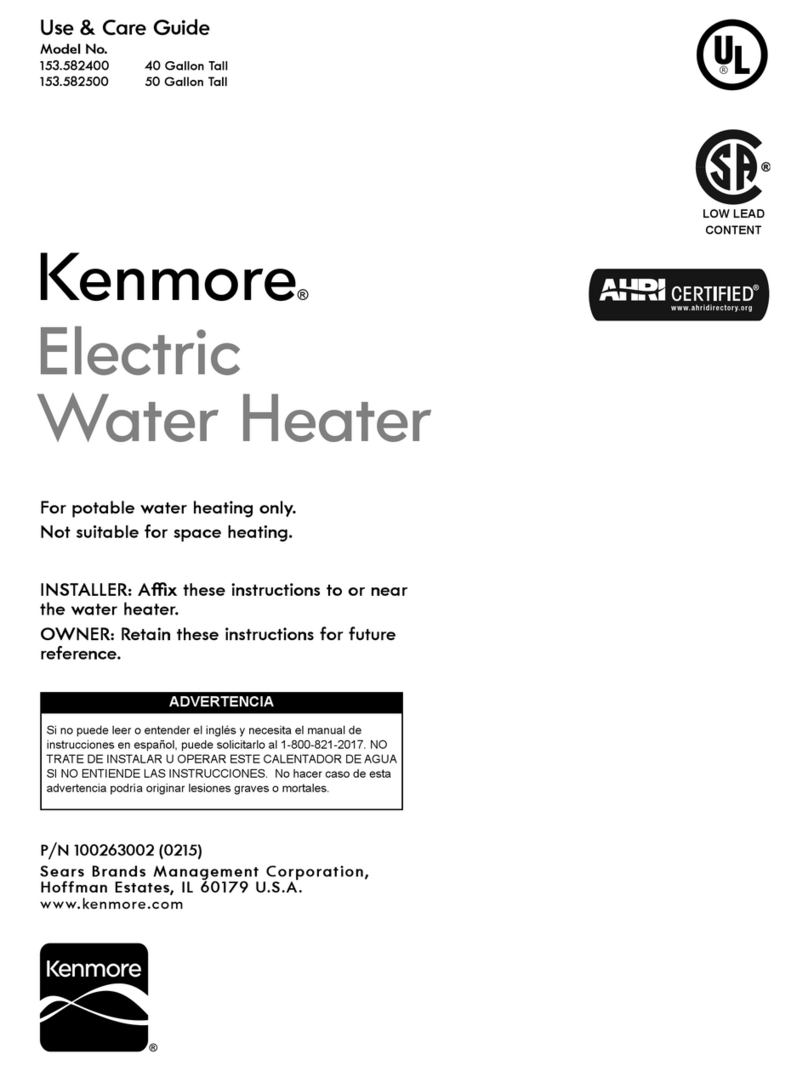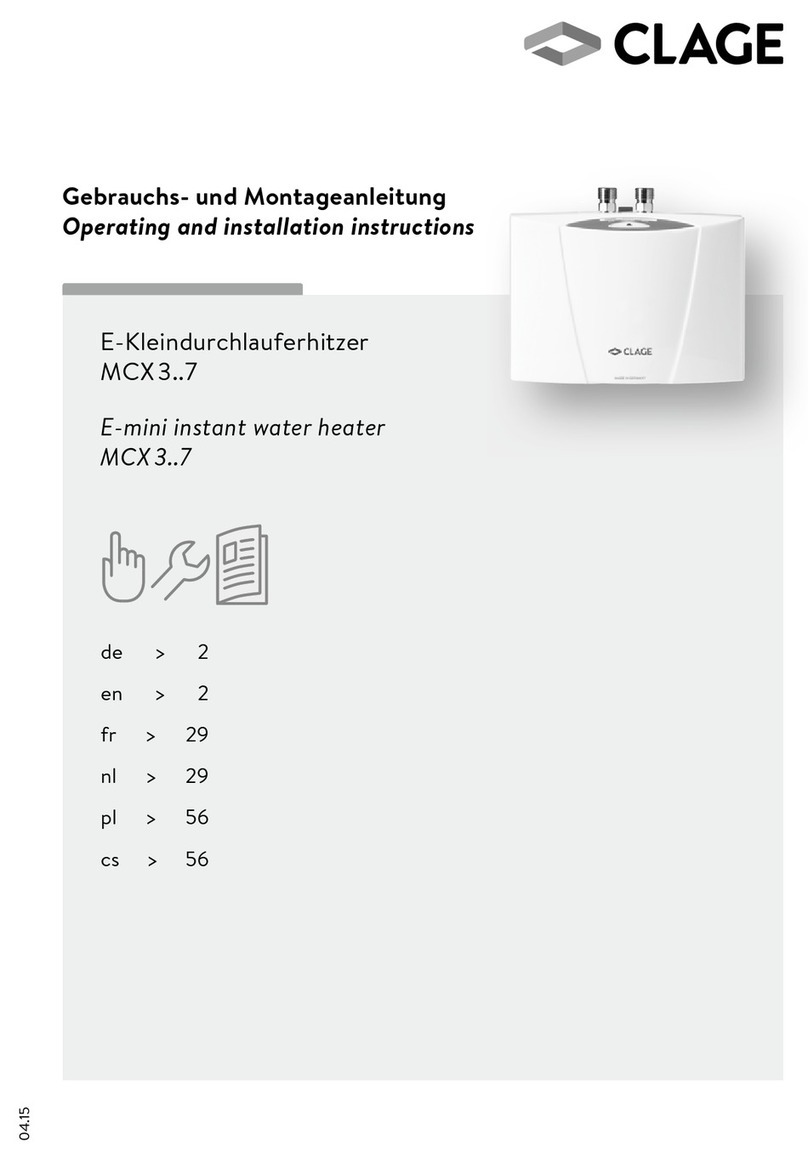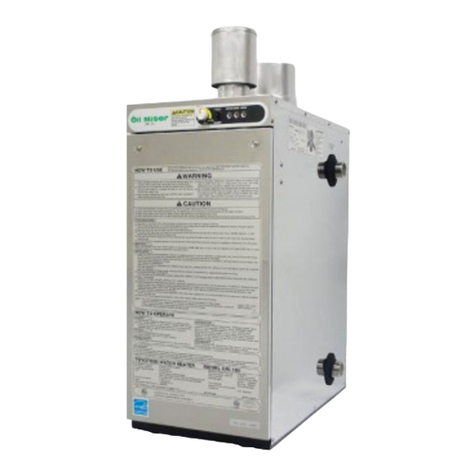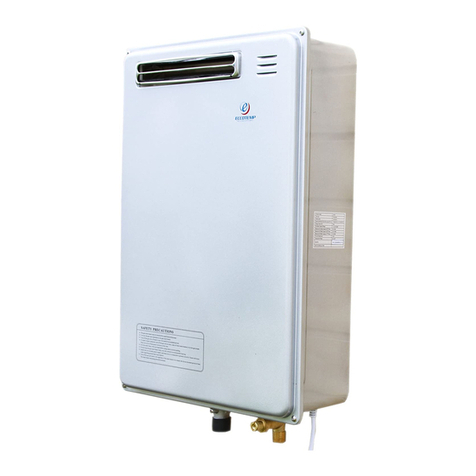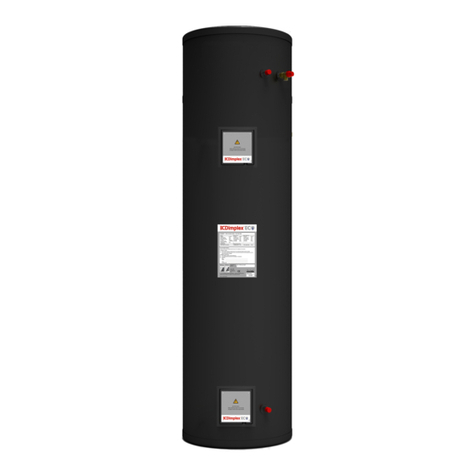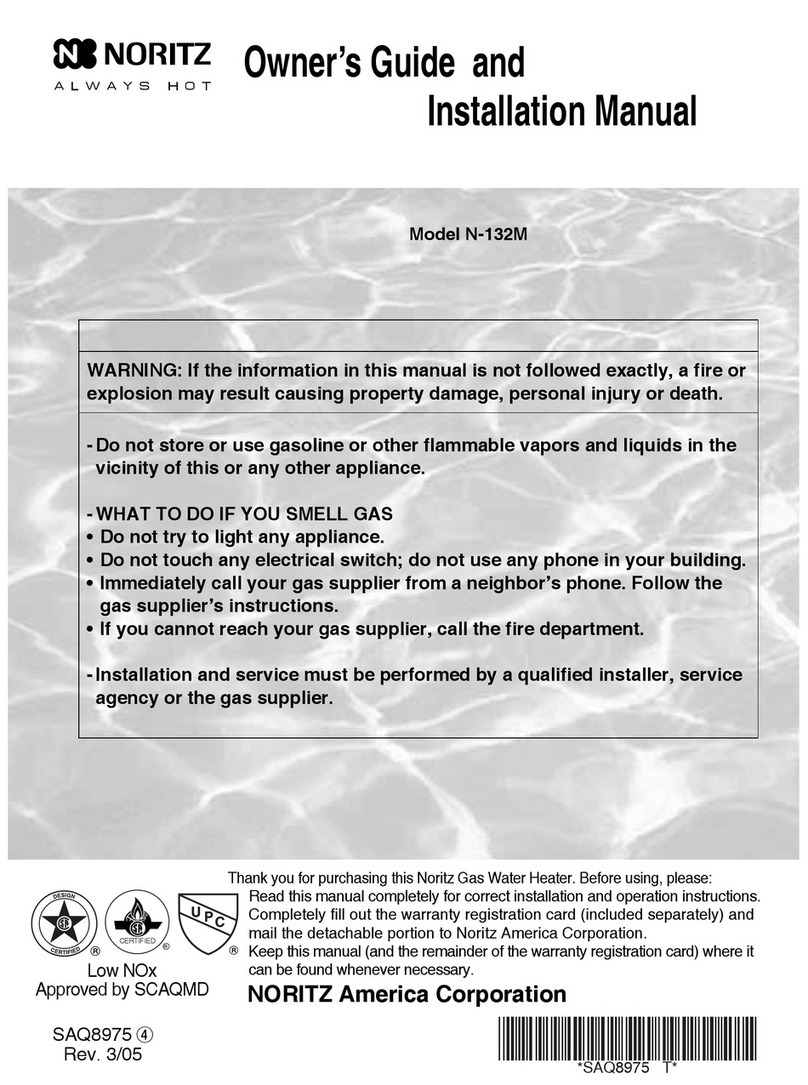SECTION I -GENERAL DESCRIPTION AND CONSTRUCTION
GENERAL DESCRIPTION
This book describes a packaged steam powered water heater that is a stationary, self-
contained unit. The complete assembly on a standard unit consists of the storage tank,
immersion heating coil, steam regulator, steam drip trap, condensate trap, steam
strainer, condensate strainer, vacuum breaker, and an ASME rated combination
temperature and pressure safety relief valve. Optional equipment may be supplied
with your unit. Please consult the product drawing for details specific to your
assembly. The unit is factory assembled, insulated, jacketed, primed, painted, piped,
tested, and ready for service connections.
CONSTRUCTION
TANK
Standard Tank Construction:
The standard storage tank is constructed of all welded carbon steel, designed and built in
accordance with ASME Section VIII and stamped, certified, and registered with the
National Board of Boiler and Pressure Vessel Inspectors. It is internally lined with
specially formulated Hydrastone cement to a 5/8-inch minimum thickness for superior
protection and tank longevity.
Optional Tank Linings:
1. Phenolic – An epoxy coating applied in two coats to a total thickness of 10-12
mils. Typically used in process applications using low conductivity deionized
(DI), distilled, or food grade water.
2. Copper – A 3lb./sq. ft. copper sheet approximately 0.0646-inches thick covers all
interior surfaces. All copper sheet seams are factory tested to ensure long lasting
protection of the steel vessel.
3. Flame-Spray Copper – Molten copper is sprayed on the interior surfaces to a
thickness of 5-6 mils. The copper bonds to the steel, and an additional overcoat of
Phenolic lining is applied on the copper to seal all pores.
4. Galvanizing – The steel pressure vessel is pickled and hot dipped in molten zinc to
create a barrier which internally and externally protects the steel vessel for cold
and hot water storage.
Optional Non-Ferrous Tank Materials:
1. Copper-Silicon – A copper-silicon alloy offers tremendous tank longevity due to
its ability to withstand the cycling effects induced from changes in water
temperature and pressure. This material is suitable for storage of hot potable water
in a variety of commercial and industrial applications.
2. 90/10 Copper-Nickel – A 90% copper and 10% nickel alloy similar to copper-
silicon, but with added strength and corrosion resistance. Typically used in
applications with corrosive environments (salt water) or critical applications.
3. Stainless Steel – Stainless steel (type 304, 316, or 316L) is well suited for high
purity applications requiring a corrosion resistant tank with minimal leaching of
impurities into the water. Well suited for process, RO, and DI water systems in the
pharmaceutical, food, and electronic industries.
TANK CONNECTIONS
The heater is supplied with separate cold water and hot water connections. A connection
is provided for mounting a combination safety temperature and pressure relief valve. An
overflow line should be utilized from the relief valve outlet to a floor drain. See drawing
for locations and sizes.
7
